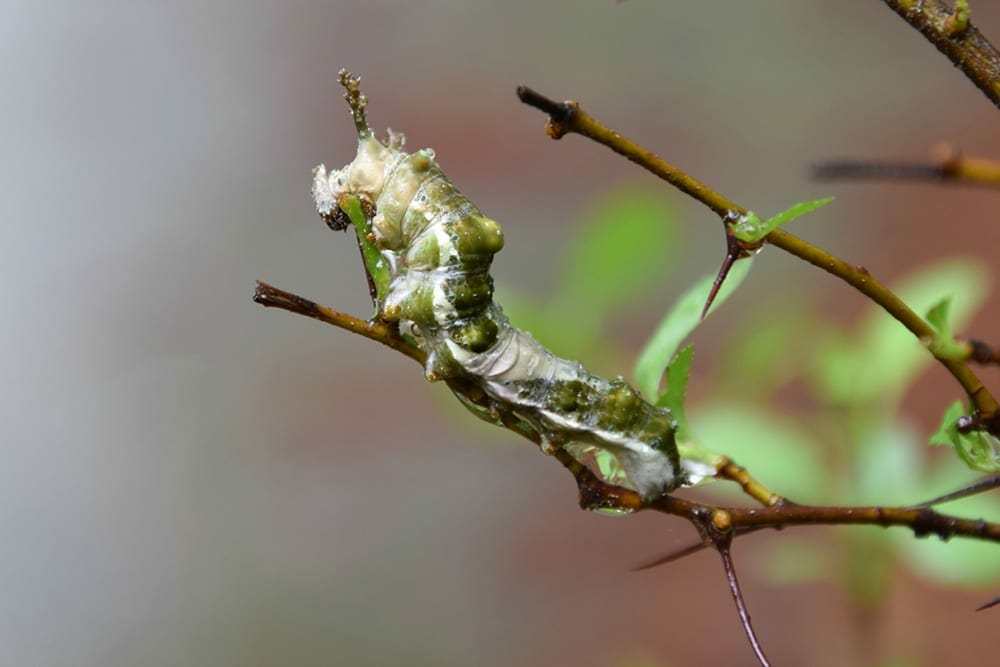Often we admire plants for their beauty, and native plants are no exception in that department. Scratch that beautiful surface a bit and you’ll find another quality to using native plants — that is their ability to support wildlife such as the red-spotted purple butterfly (Limenitis arthemis). Often mistaken for one of our dark swallowtails, this dark blue butterfly can be found basking on the ground where it takes nourishment primarily from nutrients found in moist soil, fermenting fruit, tree sap, or even dung. They only occasionally visit flowers.
Their larvae, however, feed exclusively on plants and the caterpillars can be found on black cherry (Prunus serotina) and other cherries/plums, hawthorns (Crataegus sp.), willow (Salix sp.), serviceberry (Amelanchier sp.), black oak (Quercus velutina), and a few other native hardwoods. The olive green/brown caterpillars are interesting to point out to children while explaining that their resemblance to bird droppings helps them to escape detection by predators!
Add life to your garden this year by increasing the number of host plants for native butterflies and moths. If you have a small garden, here is a list of plants that support the highest number of species.


